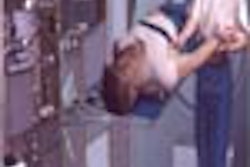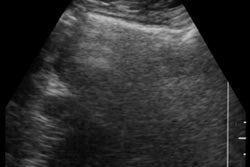The high cost of providing around-the-clock ultrasound services could make some hospital financial administrators nervous, but researchers from an ambulatory care center in Sacramento, CA, found the hefty price to be justified by speedier patient care and the potential for respectable revenue yields.
Dr. John McGahan from the department of radiology at the University of California-Davis Medical Center, along with his co-authors in the center’s division of emergency medicine, ran a six-month experiment to mark the difference in ER care before and after 24-hour, in-house sonographer coverage.
"More recently, US has been shown to be useful in detecting abdominal abnormalities in patients with blunt abdominal trauma. Once its value in such patients was established, we needed to institute a plan for performing it expediently. A response time of five minutes was requested for these emergency examinations, for which 24-hour, in-house sonographer coverage was required," they wrote in the latest issue of Radiology (September 2000, Vol.216:3, pp.788-791).
The study started out by redesigning the ultrasound services schedule. The original schedule had technical coverage of ultrasound services from 7 a.m. to 11 p.m. on weekdays and one sonographer in-house from 8 a.m. to 4 p.m. on weekends. The schedule was rearranged so that one sonographer was available until 7 p.m. while nighttime coverage was provided by another person from 7 p.m. to 7 a.m. every day. The new shifts were divided up between three employees.
Data for extra costs, number of examinations, and the total number of relative value units performed before and after the 24-hour service was instituted were compared, the group explained.
According to the results, the total number of exams performed between 11 p.m. and 7 a.m. increased from 147 to 792. The total number of relative value units increased from 304 to 2,400.
"There was nearly a fivefold increase in the number of US examinations performed per shift. These examinations were performed more expediently, enabling more rapid patient triage," they wrote.
The total sonographer cost (salary plus after-hours call) for the-six month period before 24-hour coverage was $208,749. For the six months after 24-hour coverage was put in place, the cost rose to $234,749. However, the sonographer-cost per examination dropped from $37.16 to $24.87, the study said.
"Much of the additional cost with in-house US coverage was justified and offset by the more rapid triage and disposition of patients from the emergency department and the revenues from additional examinations," according to the study.
Based on 1998 Medicare reimbursement rates, the group calculated that one additional US examination performed per shift could "generate enough revenue to offset the approximately $16,000 additional cost to the institution of providing sonographer coverage from 11 p.m. to 7 a.m.. This $16,000 is the difference between $34,320 for the in-house coverage and $18,377 for the on-call and call-back salaries before the 24-hour coverage was instituted."
Additionally, indirect costs were reduced because many patients no longer required an overnight stay in order to have a sonographic exam done the next morning, they concluded.
By Shalmali PalAuntMinnie.com staff writer
September 8, 2000
Let AuntMinnie.com know what you think about this story.
Copyright © 2000 AuntMinnie.com


















